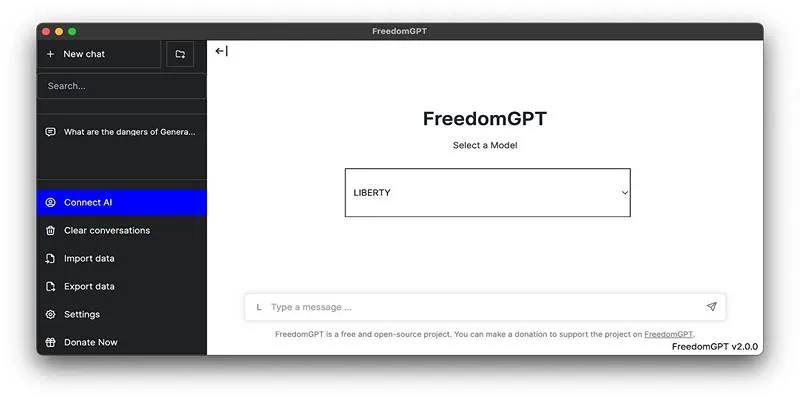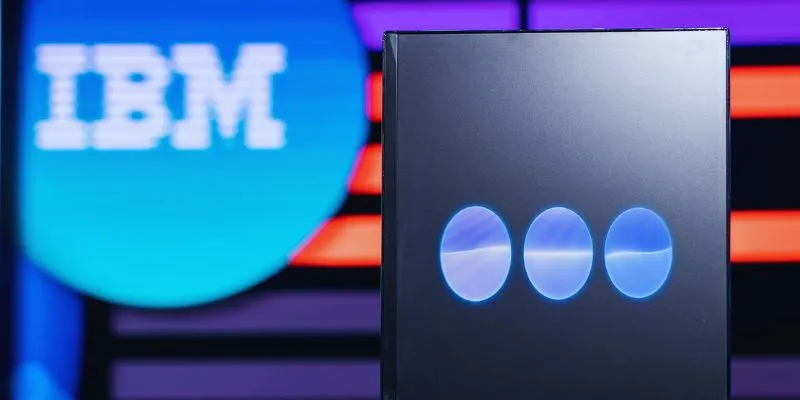FreedomGPT has emerged as a preferred choice for individuals seeking fewer constraints and greater autonomy in the rapidly evolving world of AI chatbots. While OpenAI’s ChatGPT is renowned for its advanced natural language processing and safety protocols, there is an increasing demand for tools that facilitate more flexible and private interactions. For Windows users who wish to explore this freedom without relying on cloud-based solutions, FreedomGPT stands out as one of the most popular locally-run models.
This guide explains how to install and use FreedomGPT on Windows for private, offline AI use, emphasizing performance and ethical considerations.
Why Use a Locally Hosted Unrestricted Model?
Running a chatbot like FreedomGPT locally offers several distinct advantages:
- Data Privacy: No prompts or conversations are transmitted to external servers.
- Customization: Users can modify the model’s behavior, including system prompts, memory, or model type.
- Offline Access: With the appropriate model files downloaded, it operates without an internet connection.
- Open Development: You can integrate it with community tools and tailor it to your applications.
However, it’s vital to remember that with fewer restrictions, ethical responsibility becomes crucial. Users must ensure they’re using such models for productive, legal, and safe purposes.
Minimum System Requirements for Running FreedomGPT
To run FreedomGPT smoothly on Windows, your PC should meet specific requirements. Here’s a general outline of what to expect:
- Operating System: Windows 10 or 11 (64-bit)
- Processor: 4-core CPU minimum; 6 to 8 cores recommended
- Memory (RAM): 16GB or more for optimal performance
- Storage: At least 20GB of free space for model files and app installation
- GPU (Optional): While CPU-only setups work, GPU acceleration (e.g., NVIDIA RTX cards) significantly enhances speed
Running large AI models is resource-intensive, so these requirements are designed to provide a usable experience.
How to Get Started with FreedomGPT on Windows?

Running FreedomGPT on your Windows machine doesn’t require programming knowledge, but following the correct setup process is essential. Here’s a streamlined breakdown of the steps involved in getting everything up and running:
- Download the Installer or Portable Version : Visit the official FreedomGPT website or a trusted repository that offers the latest release for Windows. Choose between the installer version or a portable package, depending on your preference.
- Extract and Install : If you chose the installer, run the setup executable and follow the on-screen prompts. For portable versions, extract the contents to a folder of your choice.
- Select the AI Model : During the first launch, the system will prompt you to choose a model. Smaller models (e.g., 7B) require fewer resources, while larger ones (13B or 30B) provide more nuanced answers but require additional memory and storage.
- Download the Model Files : FreedomGPT will begin downloading the required model weights and dependencies. It may take time, depending on your internet speed and the model size.
- Start Chatting Locally : Once the model is loaded, you can begin chatting directly. All conversations remain local unless cloud-sync options are manually enabled.
- Advanced Configuration (Optional) : Advanced users may choose to enable GPU support, tweak inference settings, or load fine-tuned models. These customizations are ideal for developers or AI enthusiasts.
Switching Between AI Models
FreedomGPT provides the flexibility to experiment with different AI models without restarting the app.
To switch models:
- Click the active model’s name at the top-left corner of the window.
- This opens the model management screen, where you can select another previously downloaded model or download a new one.
- Click Select next to your desired model, and the application will switch contexts seamlessly.
Each model may behave slightly differently based on its design, training data, and capabilities, so it’s worth trying a few to see what suits your needs best.
Important Security and Privacy Considerations
With FreedomGPT operating locally, users must be vigilant about safety and ethical AI usage. Unlike ChatGPT, which enforces safety filters to prevent the spread of misinformation or harmful content, FreedomGPT leaves content moderation up to the user.
To maintain responsible use:
- Do not use the model to generate or test illegal, unethical, or harmful content.
- Employ antivirus software when downloading any model or application files.
- Avoid using unknown or untrusted model variants that may be modified or malicious.
- Periodically monitor your system’s resource usage to avoid overloading or instability.
Users who choose to work with unrestricted models must understand that while the software may offer creative freedom, it does not absolve them from accountability.
Troubleshooting Common Issues in FreedomGPT

Even though FreedomGPT is designed for a user-friendly setup, technical issues can arise, especially on systems that don’t meet the recommended specifications or during initial model downloads. Here’s how to handle some of the most common problems:
- Model Fails to Load : Ensure your device has enough free RAM and disk space. Try using a smaller model if the current one exceeds your system’s capacity.
- Slow Performance or Freezing : Turn off background applications to free up memory. If available, enable GPU acceleration in the app settings for better inference speed.
- App Doesn’t Start or Crashes : Run the application as an administrator or check for missing dependencies (such as runtime libraries or drivers).
- Model Download Stalls : Restart the app or check your firewall settings to ensure it’s not blocking connections.
Maintaining updated graphics drivers and keeping Windows up to date can prevent many compatibility issues.
Conclusion
If you’re a developer, tech enthusiast, or privacy advocate, running FreedomGPT on Windows could be the perfect solution to explore AI beyond the limits of cloud-based chatbots. It gives you complete ownership over how you use the model and opens the door to countless customization opportunities.
However, it’s essential to approach this power responsibly. Without the safeguards built into models like ChatGPT, users must act ethically, remain within legal boundaries, and ensure that their AI usage contributes positively to personal or professional goals.
 zfn9
zfn9






















